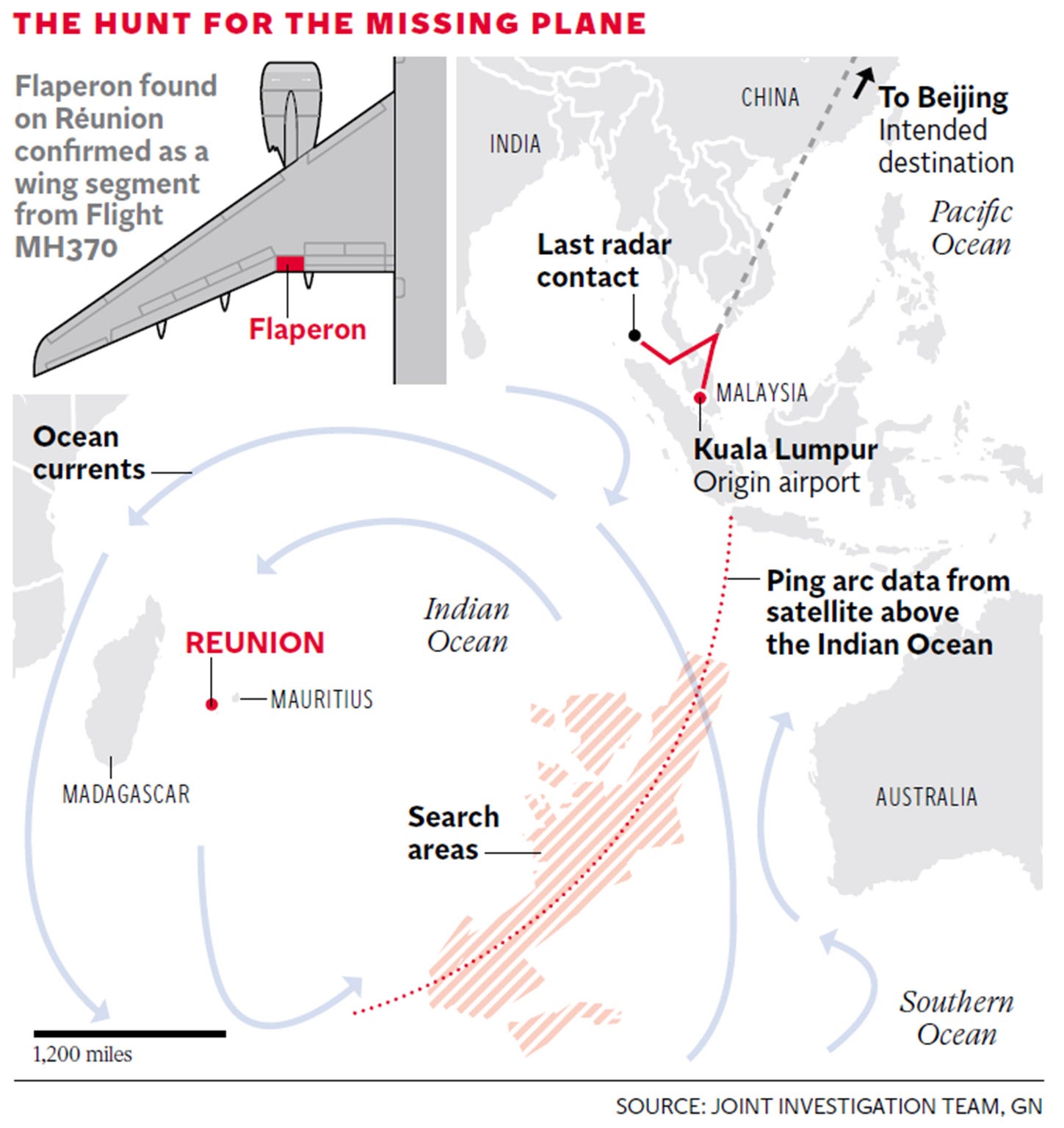Investigators 'preparing to change their minds' on what happened to MH370
The search has so far been working on the theory it hit the water after cruising and running out of fuel

Your support helps us to tell the story
From reproductive rights to climate change to Big Tech, The Independent is on the ground when the story is developing. Whether it's investigating the financials of Elon Musk's pro-Trump PAC or producing our latest documentary, 'The A Word', which shines a light on the American women fighting for reproductive rights, we know how important it is to parse out the facts from the messaging.
At such a critical moment in US history, we need reporters on the ground. Your donation allows us to keep sending journalists to speak to both sides of the story.
The Independent is trusted by Americans across the entire political spectrum. And unlike many other quality news outlets, we choose not to lock Americans out of our reporting and analysis with paywalls. We believe quality journalism should be available to everyone, paid for by those who can afford it.
Your support makes all the difference.Investigators searching for the wreckage of Malaysia Airlines flight MH370 are reportedly preparing to revive theories that the plane may have been brought down deliberately.
The Australian Transport Safety Bureau (ATSB) has been conducting its search of a 46,000 square mile area of the Indian Ocean on the assumption that the aircraft crashed when its fuel ran out after cruising on autopilot as a “ghost flight” with the pilots incapacitated or dead.
That sequence of events is supported by data from Boeing and the British Inmarsat satellite communications firm but failure to find further wreckage will cast significant doubt.
The £90 million search, which has been the most expensive in aviation history, will end in 10 weeks and passengers’ families are demanding answers.
“We’re not at the point yet, but sooner or later we will be — and we will have to explain to governments what the alternative is,” chief commissioner of the ATSB, told The Times.
“And the alternative is, frankly, that despite all the evidence as we currently have the possibility that someone was at the controls of that aircraft on the flight and gliding it becomes a more significant possibility, if we eliminate all of the current search area.
“In a few months time, if we haven’t found it, then we’ll have to be contemplating that one of the much less likely scenarios ends up being more prominent. Which is that there were control inputs into that aircraft at the end of its flight.”

Had a pilot or hijacker been in control of the Boeing 777 when it went off course on 8 March 2014, on its way from Kuala Lumpur to Beijing, the area of ocean where it may have crashed is far larger.
Australian investigators are only responsible for assisting search efforts for MH370, while the Malaysian government is working to establish why the plane disappeared.
“For search purposes, the relevant facts and analysis most closely match a scenario in which there was no pilot intervening in the latter stages of the flight,” the ATSB said last month.
“The ATSB has neither the authority under international agreements nor the need for the purposes of its search to make statements about why the aircraft disappeared.”
A wing flaperon discovered in July on the island of Reunion, in the Indian Ocean, is still being analysed by French judicial authorities.
A Chinese ship, the Dong Hai Jiu 101, was due to depart from Australia on Thursday to comb the Indian Ocean with state-of-the-art sonar equipment.
More than 32,800 square miles of the search area have been scoured since late 2014, with Australia and Malaysia sharing the cost.
Most of MH370’s 239 passengers and crew were Chinese, while Malaysians, Australians and citizens of 12 other countries were also on board.
Update: A spokesperson for the ATSB told the Independent:
“It is not ATSB's role to put forward theories about what may have happened or why. As set out in the reports on our website, the ATSB is searching on the basis that there were no control inputs at the end of the aircraft's flight.
"Any analysis or conclusion based on the results of our search are matters for the Malaysian investigations.”
Additional reporting by AP
Join our commenting forum
Join thought-provoking conversations, follow other Independent readers and see their replies
Comments